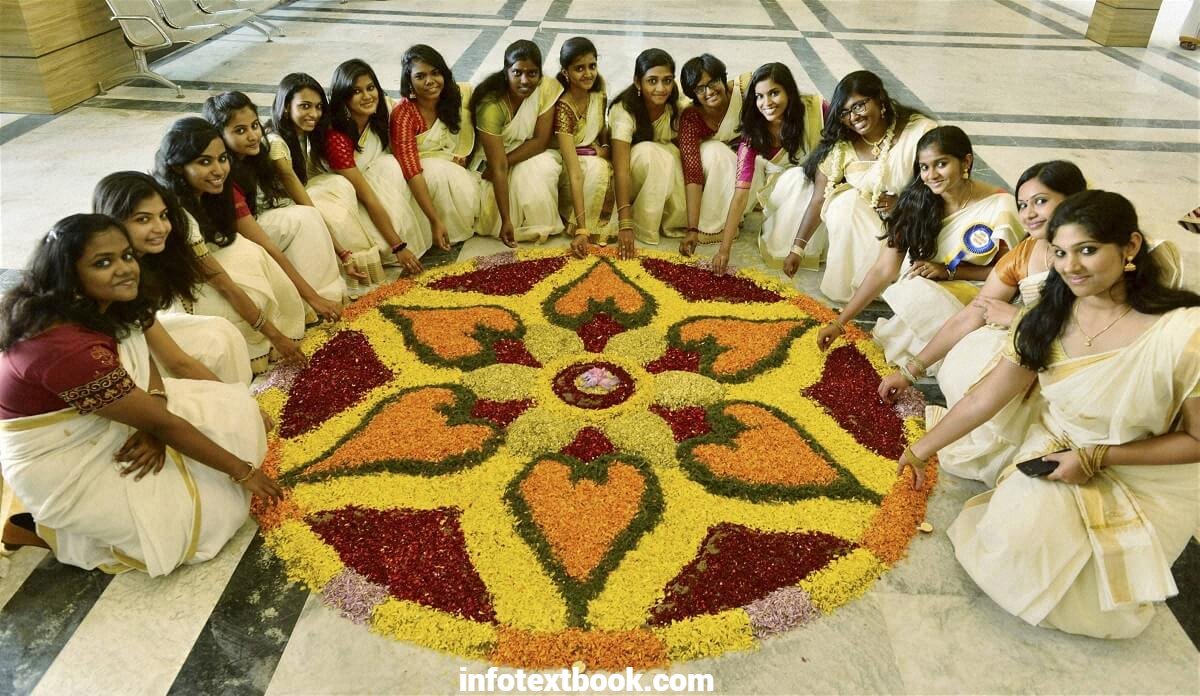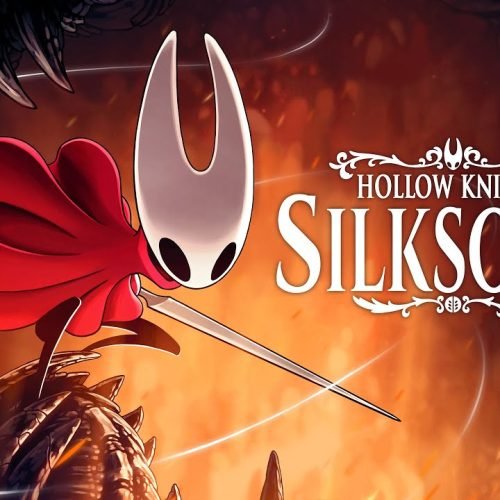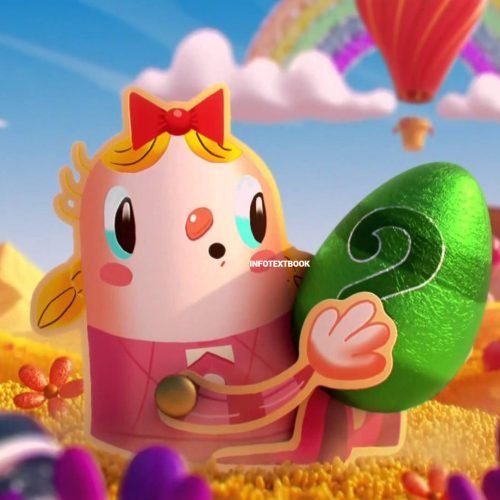Table of Contents
ToggleOnam in Kerala Celebrating the Festival of Flowers, Culture & Tradition
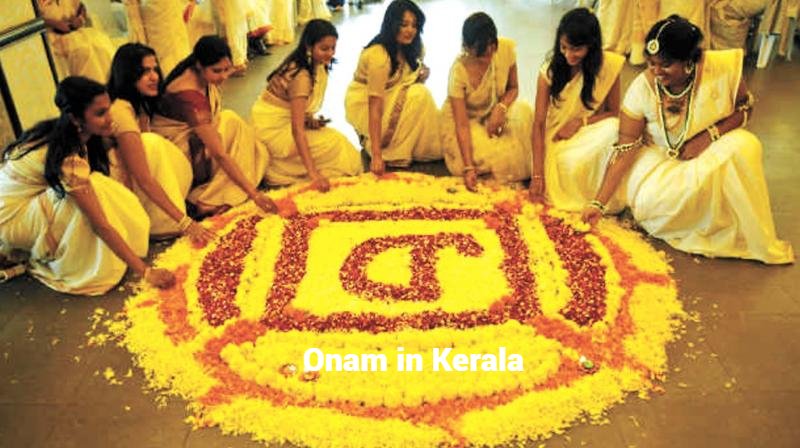
Introduction
Onam in Kerala is one of the most vibrant and significant festivals celebrated in India. Known as the harvest festival, it brings together traditions, rituals, and community spirit in a spectacular way. People from all walks of life participate in this festival, making Onam in Kerala not just a cultural celebration but also a symbol of unity and harmony. With its rich blend of food, art, and rituals, Onam captures the true essence of Kerala’s heritage.
Historical and Cultural Significance
The festival commemorates the homecoming of King Mahabali, whose reign is remembered as a time of prosperity and equality. According to legend, the gods allowed Mahabali to visit his people once a year, and Onam marks that occasion. This historical tale adds a spiritual depth to Onam in Kerala, making it both a religious and cultural celebration cherished by millions.
Traditional Celebrations and Rituals
Onam spans ten days of festivities, starting with Atham and ending with Thiruvonam. Each day is marked by unique rituals, traditional games, temple visits, and family gatherings. Homes are decorated, new clothes are worn, and communities come together to celebrate. This harmony makes Onam in Kerala a festival that bridges generations and preserves cultural identity.
Onam Sadya The Grand Feast
A highlight of the festival is the Onam Sadya, a lavish vegetarian banquet served on banana leaves. The feast includes more than 20 dishes such as avial, sambar, olan, and payasam. Families gather to enjoy this meal, reflecting the importance of food as a unifying element of Onam.
Pookalam: The Floral Carpet
During Onam, households create Pookalam, intricate floral arrangements at their doorsteps. These colorful designs symbolize prosperity and welcome King Mahabali. Competitions and displays of Pookalam across Kerala highlight the artistic and communal spirit of the festival.
Vallam Kali Snake Boat Race
The Vallam Kali, or snake boat race, is one of the most thrilling attractions of Onam. Longboats rowed by dozens of oarsmen race across Kerala’s backwaters, cheered on by thousands of spectators. This unique event captures global attention and showcases Kerala’s cultural pride.
Dance, Music, and Art Forms
Traditional dance forms like Kathakali, Thiruvathirakali, and Pulikali are performed during Onam. Pulikali, or tiger dance, where performers paint themselves as tigers, is especially popular among tourists. Music, folk songs, and stage performances add vibrancy to the festival atmosphere.
Tourism and Onam in Kerala
For tourists, Onam is the best time to experience Kerala’s traditions firsthand. From grand feasts to cultural showcases, visitors get a glimpse into the state’s unique heritage. Tourism boards actively promote Onam as a global cultural attraction, making the festival an international spectacle.
Introduction

Introduction
Festivals in India are not just occasions for joy and celebration but also reflections of the country’s deep cultural roots, traditions, and stories passed down through generations. Among these, Onam in Kerala holds a special place as one of the grandest and most vibrant festivals celebrated across the state. Known as the harvest festival of Kerala, Onam is a spectacular ten-day event that showcases the essence of the state’s culture, unity, and prosperity. It is celebrated with enthusiasm not only by Malayalis within Kerala but also by Malayali communities living around the world.
The festival commemorates the return of the legendary King Mahabali, whose reign is remembered as a golden era of equality, prosperity, and happiness. According to mythology, Mahabali was granted permission to visit his people once every year, and Onam marks this joyous occasion. This story gives the festival its spiritual depth, while the colorful rituals, feasts, and art forms highlight Kerala’s cultural brilliance.
What makes Onam in Kerala so unique is the way it seamlessly blends tradition, spirituality, and community spirit. It is not confined to a single ritual or event but is celebrated through a combination of various customs—such as the creation of Pookalam (floral carpets), the thrilling Vallam Kali (snake boat races), grand feasts like Onam Sadya, and mesmerizing performances of folk art and dance forms. Each activity reflects the state’s love for togetherness and cultural pride.
Beyond its mythological and ritualistic significance, Onam also symbolizes Kerala’s agrarian roots. Traditionally, it is celebrated after the monsoon season, marking the arrival of the harvest. This is why the festival is associated with abundance, prosperity, and gratitude to nature. Families prepare their homes, wear traditional attire, and welcome guests with warmth, turning Onam into a celebration of hospitality and inclusivity.
For visitors, Onam provides an immersive experience into Kerala’s vibrant traditions. From the aroma of freshly prepared dishes to the visual splendor of floral decorations and the thrill of boat races, the festival offers a sensory journey like no other. Tourists from around the globe plan their visits during this time to witness the festivities firsthand.
In essence, Onam in Kerala is much more than a festival it is a cultural phenomenon that unites people, revives ancient traditions, and showcases the timeless charm of Kerala’s heritage
Historical and Cultural Significance

Historical and Cultural Significance
Onam is deeply rooted in Kerala’s mythology and cultural traditions, making it one of the most celebrated festivals in South India. The central story of Onam revolves around the legendary King Mahabali, who is remembered as a just, generous, and kind ruler. According to Hindu mythology, Mahabali’s reign was considered the golden era of prosperity, equality, and happiness. People believed that during his rule, there was no discrimination, no sorrow, and no poverty. However, the growing power and popularity of Mahabali concerned the gods, who felt threatened by his influence.
To restore balance, Lord Vishnu appeared in his Vamana avatar, a dwarf Brahmin, and requested three paces of land from the king. True to his nature, Mahabali granted the wish. Vishnu then expanded to a cosmic form, covering the earth and heavens in two strides. For the third, Mahabali offered his head, symbolizing ultimate humility and devotion. Impressed by this act, Lord Vishnu granted him the boon of visiting his people once every year. That homecoming is celebrated as Onam, reminding people of the golden days under Mahabali’s reign.
The historical and cultural importance of Onam in Kerala lies not only in mythology but also in the values it represents equality, harmony, and communal unity. It is a festival that transcends religious boundaries, celebrated by Hindus, Christians, and Muslims alike. Families come together to prepare grand feasts, create floral decorations, and participate in games, symbolizing inclusiveness and joy.
Another cultural highlight is the emphasis on agriculture. As a harvest festival, Onam marks the time when farmers reap their crops, giving thanks to nature and seeking prosperity for the coming year. The celebrations reflect Kerala’s agrarian roots, connecting modern society with its traditional way of life.
The artistic significance of Onam is equally important. From Kathakali performances to Pulikali (tiger dance) and Vallam Kali (snake boat races), the festival preserves and promotes Kerala’s classical and folk art forms. These cultural elements not only entertain but also keep alive the region’s heritage for future generations.
Ultimately, the historical and cultural significance of Onam in Kerala is found in its ability to unite people in joy, gratitude, and shared traditions. It is not just a festival of the past but a living tradition that continues to define Kerala’s cultural identity today.
Traditional Celebrations and Rituals
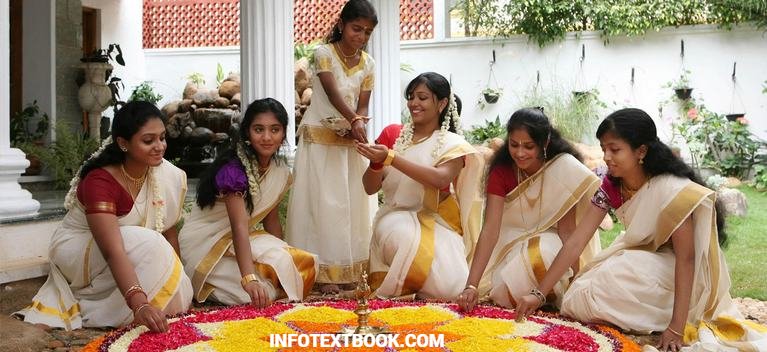
Traditional Celebrations and Rituals
Onam is a festival that beautifully blends rituals, traditions, and community joy, making it one of the most cherished celebrations in India. In particular, Onam in Kerala is marked by ten days of grandeur, beginning with Atham and ending with Thiruvonam, each day carrying its own significance. These rituals not only preserve the cultural heritage of the state but also bring families and communities together.
The festival starts with people cleaning and decorating their homes, symbolizing purity and readiness to welcome King Mahabali. A central part of the celebration is the Pookalam, a floral carpet designed at the entrance of homes. Each day, more layers of flowers are added, and by Thiruvonam, the design becomes a vibrant masterpiece. The Pookalam is not just an artistic display but also a ritual to honor prosperity and unity.
Another significant tradition is the Onam Sadya, a grand vegetarian feast served on banana leaves. The Sadya typically features over 20 dishes, including sambar, avial, olan, and different varieties of payasam. It represents abundance and gratitude for the harvest season. Families gather together to enjoy this meal, making it an integral part of the rituals.
Temples also play a vital role during the festival, with special prayers, cultural performances, and traditional music. People dress in new clothes, especially the iconic Kerala attire—men wear mundu (dhoti), and women adorn themselves in kasavu sarees. These customs highlight Kerala’s timeless traditions.
Various traditional games and dances also mark the festivities. Pulikali, or the tiger dance, where performers paint themselves and dance to drumbeats, is a spectacular sight. Similarly, Vallam Kali, the snake boat race, symbolizes teamwork and unity. Both events attract thousands of spectators, including international tourists, making Onam a truly global celebration.
Each ritual performed during Onam carries a deeper meaning of gratitude, prosperity, and cultural pride. They serve as a reminder of King Mahabali’s golden rule and the values of equality and harmony. This is why Onam in Kerala is not just a festival but also a spiritual and cultural journey that continues to inspire generations
Onam Sadya The Grand Feast
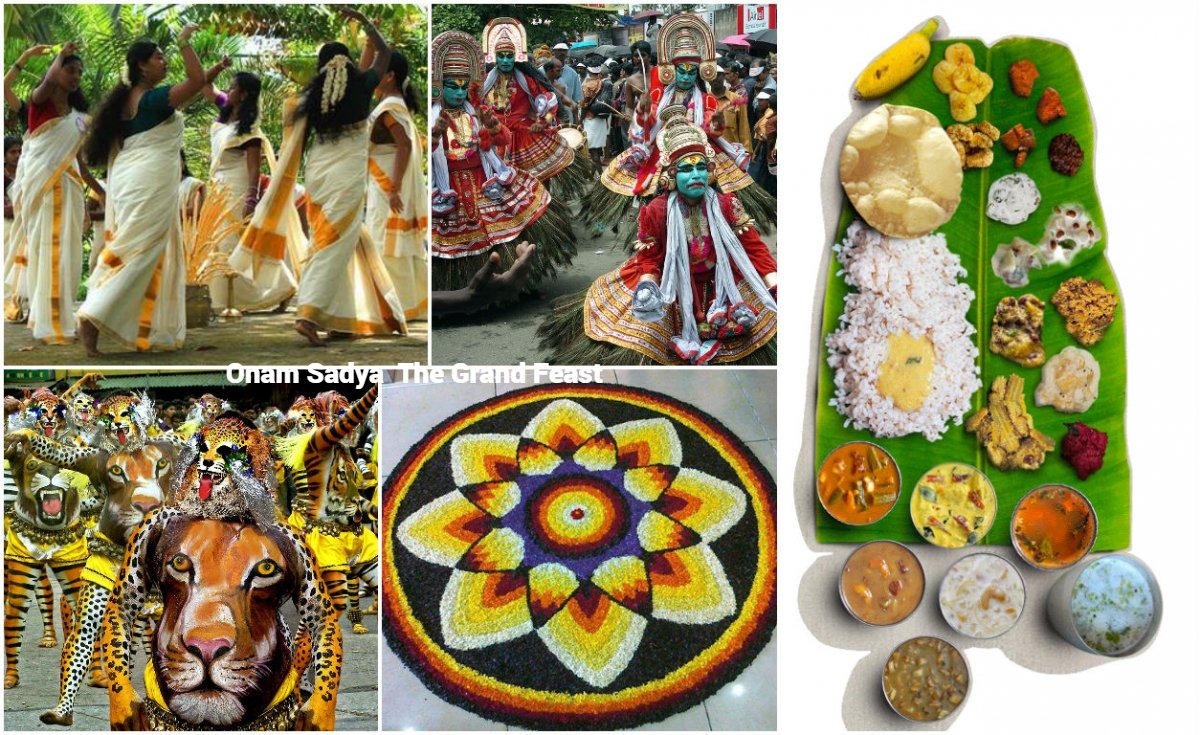
Onam Sadya The Grand Feast
Onam is one of the most celebrated festivals in India, and one of its biggest highlights is the Onam Sadya, a grand vegetarian banquet that symbolizes prosperity, unity, and cultural richness. The Sadya is not just about food; it is about tradition, community, and the spirit of sharing that defines Onam.
The Significance of Onam Sadya
The Onam Sadya holds deep cultural importance as it reflects the agricultural prosperity of Kerala. Traditionally served on a banana leaf, the meal is a reminder of the state’s rich culinary heritage. Every dish has a special role in balancing flavors sweet, sour, spicy, and salty ensuring that the Sadya is a wholesome experience.
For Malayalis, preparing and sharing the Onam Sadya is a way of honoring King Mahabali’s memory and celebrating abundance. Families come together, friends unite, and communities bond over this festive meal, making it an integral part of Onam in Kerala.
A Feast of Many Dishes
What makes the Sadya extraordinary is its variety. A traditional Sadya can include more than 20 dishes, starting with rice as the base. Popular items include sambar, avial, olan, thoran, pachadi, and erissery, each adding distinct flavors to the feast. Payasam, a sweet dessert made of milk, jaggery, or lentils, is the perfect way to end the meal.
The arrangement of the Sadya is also symbolic. The food is placed in a specific order on the banana leaf, starting from pickles and chips on the top left to rice and curries at the center. This meticulous arrangement showcases the cultural discipline and attention to detail that defines Onam in Kerala.
More Than Just a Meal
Onam Sadya is more than a traditional banquet it is an experience. The joy of sitting cross-legged, eating with hands, and savoring each dish with family and friends creates a sense of unity and equality. No matter one’s background, everyone shares the same food on the same leaf, symbolizing inclusiveness
Pookalam The Floral Carpet
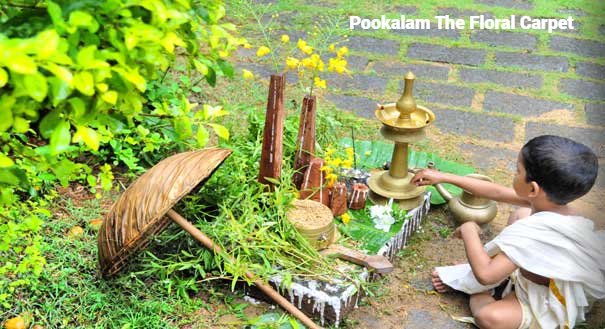
Pookalam The Floral Carpet
One of the most beautiful highlights of Onam in Kerala is the creation of Pookalam, a vibrant and intricate floral carpet made at the entrances of homes, temples, and public spaces. The word “Pookalam” is derived from two Malayalam words: “Poo” meaning flower and “Kalam” meaning artwork or design. Together, it represents a decorative floral art form that not only beautifies the surroundings but also holds cultural and spiritual significance.
Pookalam is usually created with fresh, colorful flowers like marigold, jasmine, chrysanthemum, and hibiscus, carefully arranged in circular patterns. The round shape symbolizes eternity, prosperity, and unity. Families gather early in the morning to design Pookalam, making it an activity that fosters togetherness and creativity.
During the ten-day festival, each day’s Pookalam grows in size and complexity. On Atham, the first day of Onam, the floral carpet is small and simple. As the days progress toward Thiruvonam, the final day, the designs become larger, more elaborate, and filled with vibrant hues. Competitions are also organized in schools, colleges, and communities, where participants showcase their creativity and skill through intricate floral designs.
Pookalam is not just about aesthetics; it has deep cultural meaning. It is believed that these floral carpets welcome King Mahabali, whose annual visit is celebrated during Onam. Decorating the entrance with Pookalam is also seen as a gesture of hospitality, symbolizing warmth and inclusiveness.
In modern times, while the essence of tradition remains intact, the style of Pookalam has evolved. Today, many people use flower petals, colored powders, and even eco-friendly materials to enhance designs. Artists often blend traditional motifs with contemporary patterns, making Pookalam a true fusion of heritage and innovation.
Tourists who witness Onam in Kerala are often mesmerized by the beauty of Pookalam. It gives them a glimpse of the state’s artistic spirit and cultural pride. With its vibrant colors, symbolic meaning, and community involvement, Pookalam stands as one of the most cherished traditions of the festival.
Ultimately, Pookalam represents more than floral beauty it reflects unity, devotion, and Kerala’s timeless cultural heritage. It is a living art form that continues to inspire people across generations, keeping the spirit of Onam in Kerala alive in its truest form
Vallam Kali Snake Boat Race
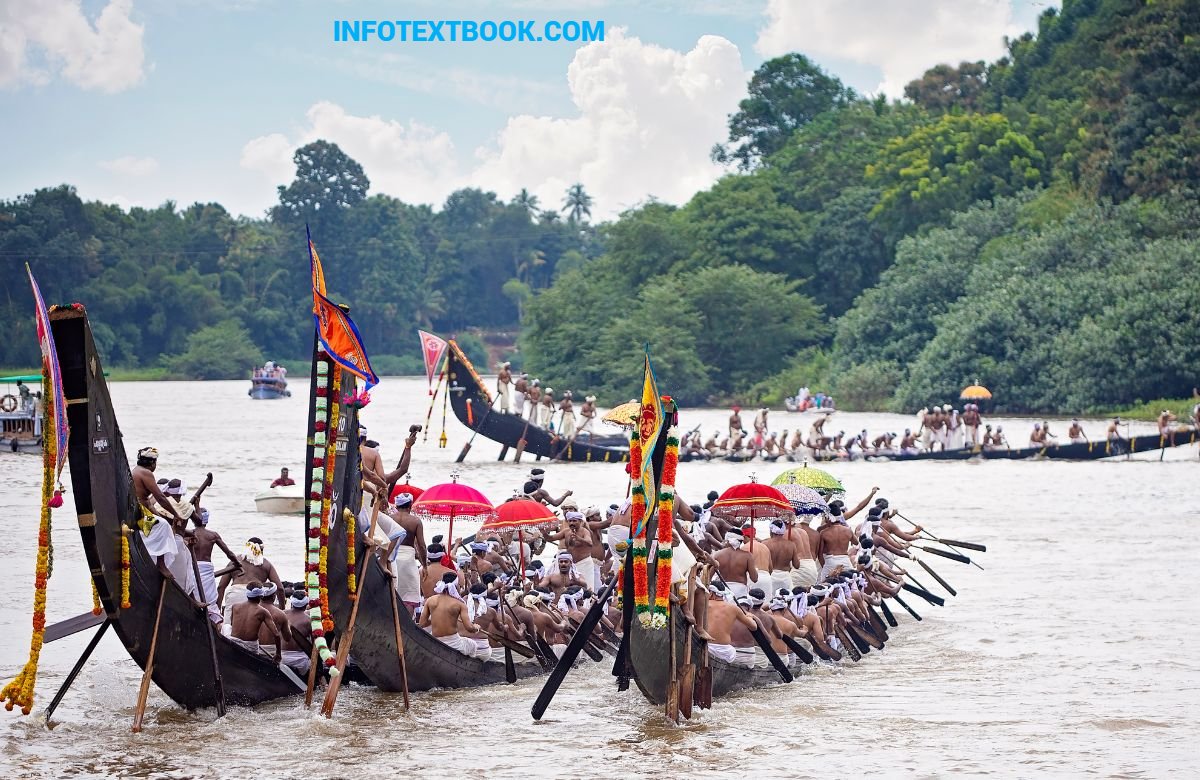
Vallam Kali Snake Boat Race The Thrilling Spirit of Kerala’s Onam Festival
The Vallam Kali Snake Boat Race is one of the most spectacular and culturally rich events held during Onam in Kerala. Known for its grandeur and high energy, this traditional boat race takes place on the serene backwaters, drawing thousands of spectators from across the world. The long, slender boats, known as “Chundan Vallams” or snake boats, glide through the waters with synchronized precision, creating a breathtaking sight that symbolizes unity, strength, and tradition.
History and Significance
Vallam Kali has its roots in Kerala’s history, tracing back hundreds of years. It was initially held as a form of naval combat practice and later transformed into a cultural event tied to festivals and temple traditions. Today, it has become an integral part of Onam in Kerala, reflecting the spirit of teamwork and the pride of local communities. Each village prepares its boat with devotion, and the competition fosters a sense of belonging among the participants.
The Race and Its Grandeur
The snake boats, often over 100 feet long, can carry more than 100 rowers. Each rower paddles in perfect rhythm, guided by the beat of drums and traditional songs called “Vanchipattu.” The synchronized movements of the oarsmen are not just athletic but deeply spiritual, as they consider rowing a tribute to their heritage. The most famous races include the Nehru Trophy Boat Race in Alappuzha and the Aranmula Boat Race, both of which attract massive crowds and international tourists.
Tourist Attraction
For travelers, watching Vallam Kali during Onam in Kerala is a once-in-a-lifetime experience. Tourists gather on the riverbanks or hire boats to witness the electrifying competition up close. The festive atmosphere, marked by music, cheers, and cultural performances, transforms the event into a grand carnival. It not only promotes Kerala’s traditions but also boosts tourism, as people from across the globe visit the state to witness this iconic race.
Dance, Music, and Art Forms
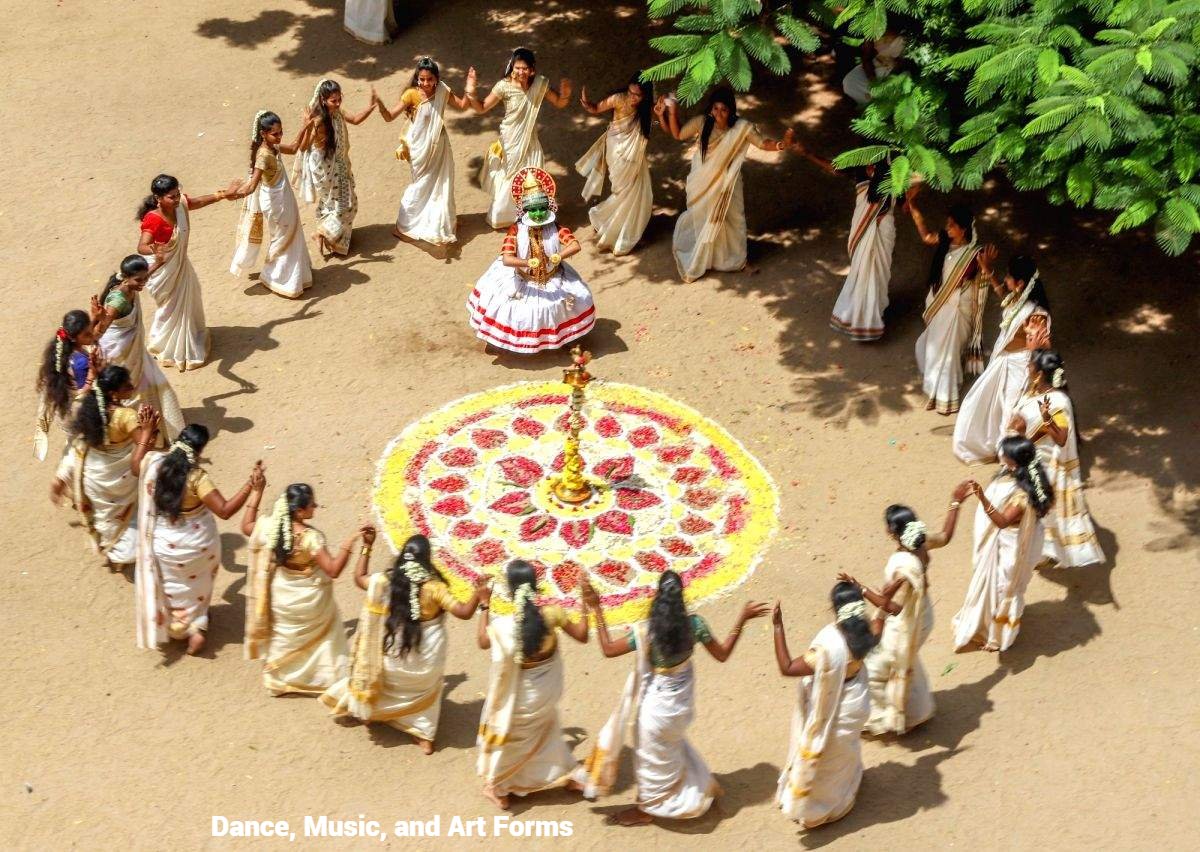
Dance, Music, and Art Forms
One of the most captivating aspects of Onam in Kerala is the cultural extravaganza of dance, music, and art forms that bring communities together in joyous celebrations. These artistic traditions are not only entertaining but also hold deep cultural and spiritual significance, representing the state’s rich heritage.
Thiruvathirakali The Graceful Women’s Dance
Thiruvathirakali, also known as Kaikottikali, is a graceful group dance performed by women around a traditional lamp. Dressed in elegant Kerala sarees, they move rhythmically in circles, clapping their hands in unison to folk songs. This dance is symbolic of unity, sisterhood, and devotion, and it remains an integral part of Onam festivities.
Kathakali The Classical Storytelling Art
Kathakali, Kerala’s world renowned classical dancedrama, is performed during Onam with grandeur. Artists wear elaborate costumes, striking makeup, and towering headgear, enacting tales from Indian epics like the Mahabharata and Ramayana. The colorful expressions and dramatic storytelling make Kathakali a spectacle that mesmerizes both locals and tourists during Onam in Kerala.
Pulikali The Tiger Dance
Pulikali, or the “play of tigers,” is among the most popular folk arts performed during Onam. In this energetic performance, men paint their bodies with tiger stripes and leap to the beats of traditional percussion instruments like chenda and thakil. Streets come alive with this unique art form, attracting large crowds and adding a vibrant, playful element to the festival.
Folk Songs and Traditional Music
Music is another inseparable part of the celebrations. Traditional instruments like the chenda, maddalam, and elathalam create rhythmic beats that energize cultural performances. Folk songs praising King Mahabali and celebrating the harvest season are sung across villages and towns, adding a soulful charm to the festival spirit.
Street Performances and Local Arts
Apart from mainstream art forms, Onam also showcases local talents through street plays, puppet shows, and martial art displays like Kalaripayattu. These performances are open to the community, ensuring that art remains accessible to everyone.
Tourism and Onam in Kerala
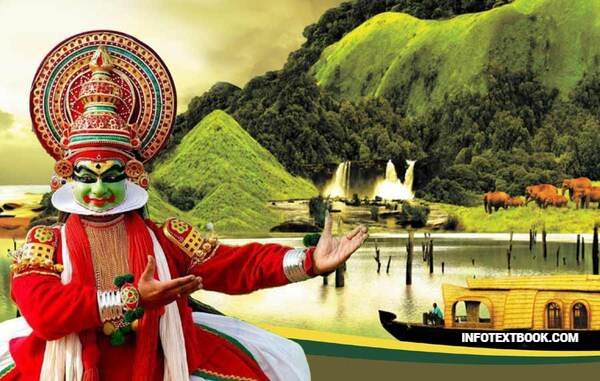
Tourism and Onam in Kerala
Onam in Kerala is not only a cultural festival but also one of the biggest attractions for domestic and international tourism. Every year, thousands of visitors plan their trips around this grand celebration to witness the state’s traditions, food, art, and festive atmosphere. Tourism during Onam offers a unique opportunity to explore Kerala’s heritage while enjoying its natural beauty.
One of the highlights for tourists is the Onam Sadya, the traditional vegetarian feast served on banana leaves. Hotels, resorts, and homestays across Kerala prepare authentic Sadya meals, allowing travelers to experience the flavors of Kerala’s cuisine. Similarly, the Pookalam, or floral carpets, displayed in homes, offices, and public places, captivate visitors with their vibrant colors and artistic patterns. Many cultural organizations also host competitions and exhibitions where tourists can engage with local communities.
The famous Vallam Kali, or snake boat race, held in backwaters like Alleppey, is a major tourist attraction during the festival. Watching hundreds of oarsmen row in rhythm, cheered on by enthusiastic crowds, is an unforgettable experience. Tour operators arrange special packages for visitors, ensuring they don’t miss this spectacular event.
Dance and music performances are another highlight of tourism during Onam. Traditional art forms like Kathakali, Thiruvathirakali, and Pulikali (tiger dance) are staged in cultural centers and public spaces. These performances allow tourists to appreciate Kerala’s deep-rooted artistic traditions while also participating in the festive spirit.
For international tourists, Onam in Kerala provides a once-in-a-lifetime cultural immersion. The Kerala Tourism Department organizes special programs during the festival, showcasing everything from handicraft fairs to folk performances. Many visitors combine their Onam experience with tours of Kerala’s backwaters, hill stations, and beaches, making their trip both cultural and scenic.
Overall, Onam in Kerala has become a global attraction, drawing travelers eager to experience its mix of traditions, hospitality, and celebrations. It offers tourists not only a glimpse into Kerala’s culture but also a sense of belonging as they join locals in celebrating unity and prosperity
Final Thoughts

Final Thoughts
Onam in Kerala is more than just a traditional festival; it is a timeless celebration that beautifully intertwines history, culture, and community spirit. Rooted in the legend of King Mahabali, this harvest festival serves as a reminder of prosperity, equality, and harmony values that continue to resonate in today’s world. Every aspect of the festival, from the grand Onam Sadya to the vibrant Pookalam, reflects the essence of Kerala’s cultural identity and the importance of unity among people.
One of the most striking features of Onam is how it transcends barriers. People of all religions, communities, and generations join hands to participate in the rituals, art forms, and celebrations. This inclusiveness not only strengthens the cultural fabric of Kerala but also sends a powerful message of togetherness to the world. Tourists and locals alike are drawn to the festive energy, making Onam in Kerala a unique occasion that bridges tradition with modernity.
The festival also highlights the deep connection between people and nature. The floral carpets, agricultural festivities, and traditional feasts all point to a life in sync with the seasons and natural abundance. As Kerala continues to attract global attention for its tourism, Onam plays a key role in showcasing the richness of its heritage. Visitors who experience Onam in Kerala often carry with them memories of joy, community bonding, and cultural pride.
In today’s fast-paced lifestyle, festivals like Onam remind us of the importance of slowing down, celebrating life, and cherishing moments with loved ones. Beyond rituals and feasts, it represents values that the world urgently needs unity, gratitude, and respect for tradition. Whether you are a Malayali celebrating at home or a visitor experiencing Kerala during the season, Onam brings a sense of belonging and happiness that transcends boundaries.
Ultimately, Onam is not just about honoring the past but also about creating new memories, sharing happiness, and spreading positivity. It is a festival that continues to shine as a beacon of culture and tradition, inspiring people across the globe
FAQs Onam in Kerala
Q1. What is Onam in Kerala?
Onam in Kerala is a major annual harvest festival celebrated with traditional rituals, feasts, dances, and cultural events to honor King Mahabali’s homecoming.
Q2. When is Onam celebrated?
Onam usually falls in the Malayalam month of Chingam (August–September) and spans ten days, with Thiruvonam being the most important day.
Q3. What are the main traditions of Onam in Kerala?
Key traditions include Pookalam (floral designs), Onam Sadya (grand feast), Vallam Kali (snake boat races), traditional dances, and cultural performances.
Q4. What is Onam Sadya?
Onam Sadya is a lavish vegetarian banquet served on banana leaves, typically consisting of over 20 traditional dishes like sambar, avial, and payasam.
Q5. What is Pookalam?
Pookalam is a colorful floral arrangement created at the doorstep of homes during Onam, symbolizing prosperity and welcoming King Mahabali.
Q6. What is Vallam Kali?
Vallam Kali, or the snake boat race, is a competitive and visually spectacular boat race held on Kerala’s backwaters during the festival.
Q7. How can tourists experience Onam in Kerala?
Tourists can participate in cultural events, taste traditional Onam Sadya, watch Pookalam competitions, enjoy Vallam Kali, and witness local dances and music performances.
Q8. Why is Onam celebrated?
Onam celebrates the annual visit of King Mahabali, whose reign is remembered as a time of prosperity, equality, and happiness in Kerala

